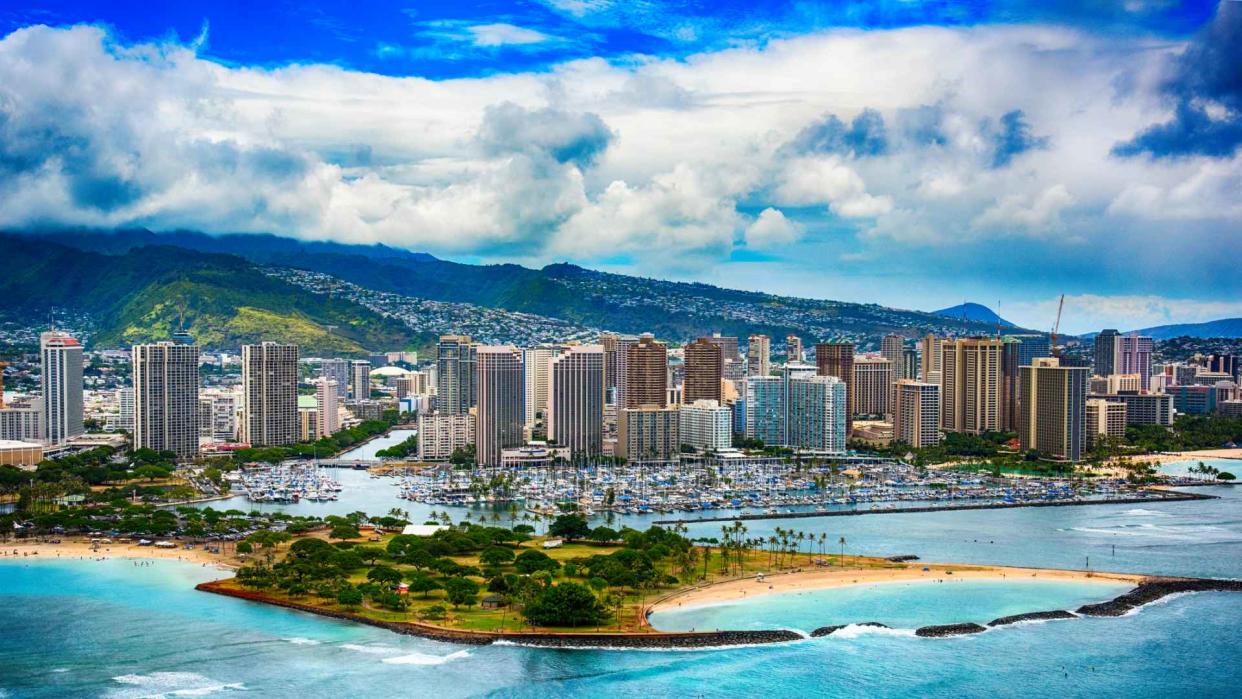Here’s the Salary a Person Needs To Be Considered Middle Class in Hawaii

Do you consider yourself to be in the middle class? That term can be interpreted differently and complex for lots of people, especially depending on where you live. Being middle class in Hawaii is a unique classification unto itself.
Check Out: A $150K Income Is ‘Lower Middle Class’ In These High-Cost Cities
Read More: 5 Genius Things All Wealthy People Do With Their Money
“Middle class,” or “middle-income households,” is defined by The Pew Research Center as individuals or households that have incomes that are two-thirds to double the U.S. median household income.
But that definition does not take into account the cost of living, which varies from state to state across America, as does the average income. Someone who might be middle class in a state like Iowa or Alabama would not be the same as a middle-class person in Hawaii.
Living in Hawaii can sound like a dream come true to many Americans. The legendary, idyllic oceans hugging the fourth largest coastline in the nation across eight island archipelagos have been captured in movies, pictures and the imaginations of millions. With a one of a kind culture, history and vibe, there is no place on earth like Hawaii. This status also means that those who travel on vacation spend an average of $1,899 per person per week for the typical Hawaii trip, according to Just a Pack. And that’s just to visit! Living there requires paying top dollar for the privilege of everything Hawaii has to offer.
When the dollar amounts are broken down in terms of states and their respective middle-class qualifications, Hawaii is definitely on the higher side of the spectrum. Not only does the income range outrank many other states, but so do the expenses for cost of living.
A Look at Middle Class in Hawaii
In Hawaii, the median household income is $94,814. Compare that to Alabama’s $59,609 and Iowa’s $70,571 median household incomes that are considered middle class and you see a stark difference. But earnings to class tier are on a spectrum. In Hawaii, you can rank just above lower class if you earn an income of $63,209 annually. However, you still would not be considered upper class unless your yearly earnings went above $189,628.
Honolulu, the capital of Hawaii, is considered to be the second most expensive city to live in within the United States. Kiplinger reported that “housing is the biggest income-eater” and “[h]ousing-related costs are more than three times the national average in Honolulu. Heck, the average home carries a price of almost $1.7 million.”
Learn More: How Far a $100,000 Salary Goes in America’s 50 Largest Cities
Of course, being an island state, lots of shipping and importing must take place to get basic goods to the citizens living there. That means that prices go up for basic things, such as groceries, gas and medical expenses. The Kiplinger report went on to say that “eggs and bananas cost almost three-quarters of the national average. Getting to the store costs more too. Filling up your gas tank will cost 29% more than other cities in the survey. Overall transportation costs are 26% more expensive, and locals shell out upwards of 26% more for healthcare.”
According to Dwell Hawaii, which utilized data from a 2020 study done by the U.S. Department of Housing and Urban Development (HUD), noted that in Hawaii a “‘low income’ for an individual living on Oahu is considered $93,000. That’s staggering considering it’s nearly double the national average income of a full time salary earner is around $48,672.”
There’s a good reason for this middle classification in Hawaii. When you put the average earnings for middle-class income next to expenses for cost of living, you’ll see that utilities are 42% higher than the national average, with groceries not far behind at 50% higher than the rest of America. Of course, the housing difference is the most striking, with Honolulu prices going for 214% more than the rest of the country.
All of which is to say that if you consider yourself middle class and a resident of the state of Hawaii, then it helps to make roughly $100,000 annually in terms of income to cover the cost of food, gas, healthcare and housing, with a little left over to enjoy the island paradise you call home.
More From GOBankingRates
This article originally appeared on GOBankingRates.com: Here’s the Salary a Person Needs To Be Considered Middle Class in Hawaii
